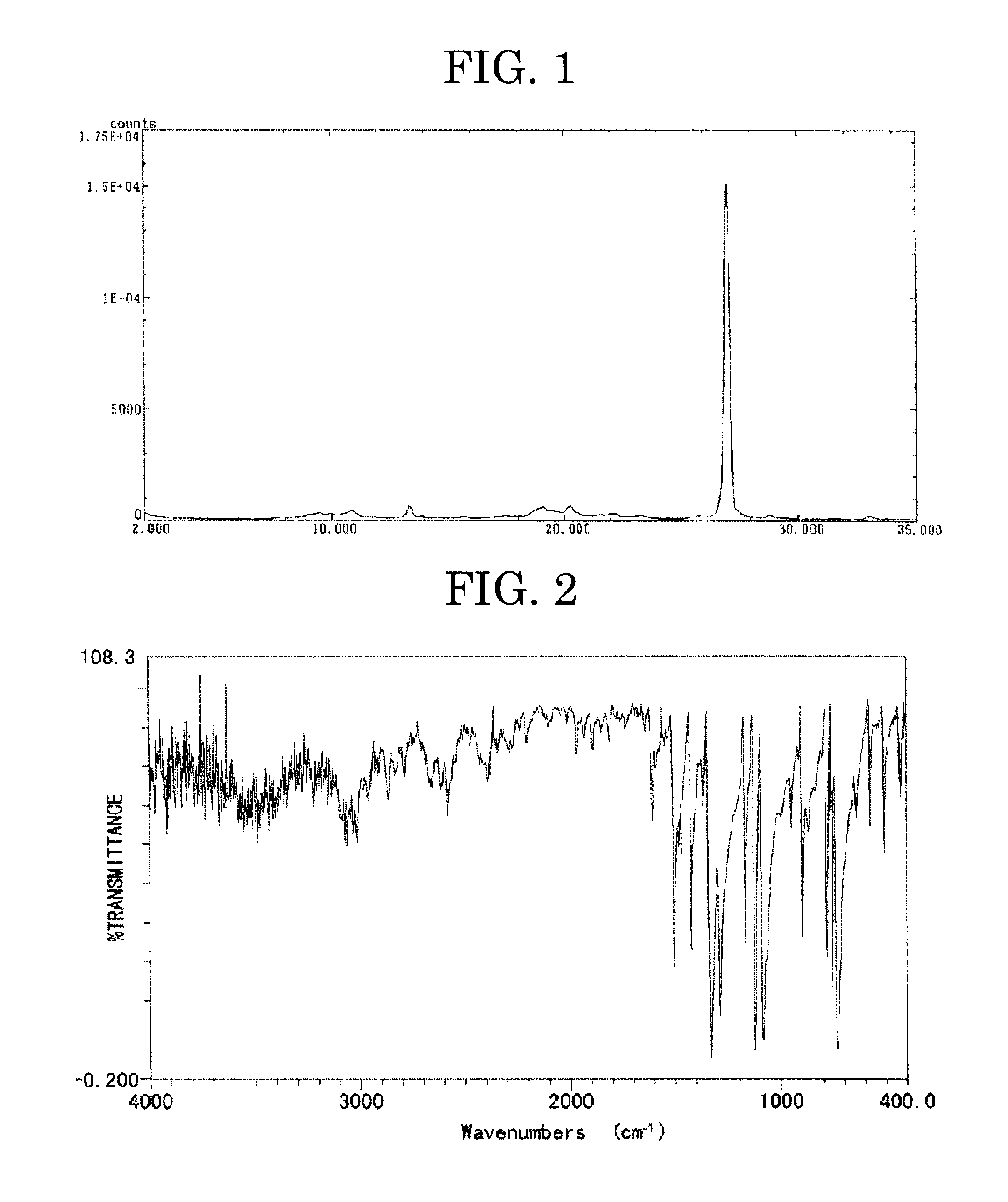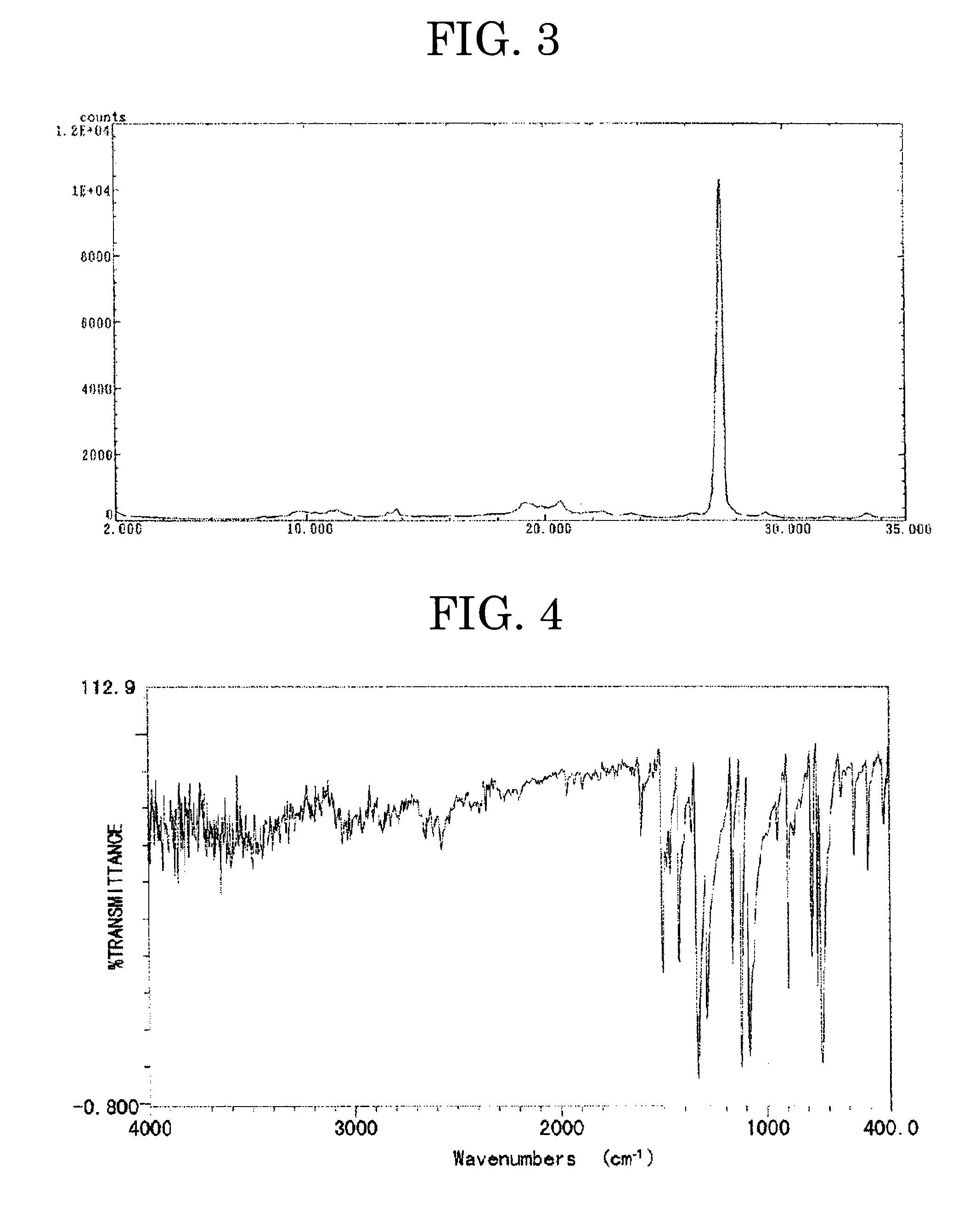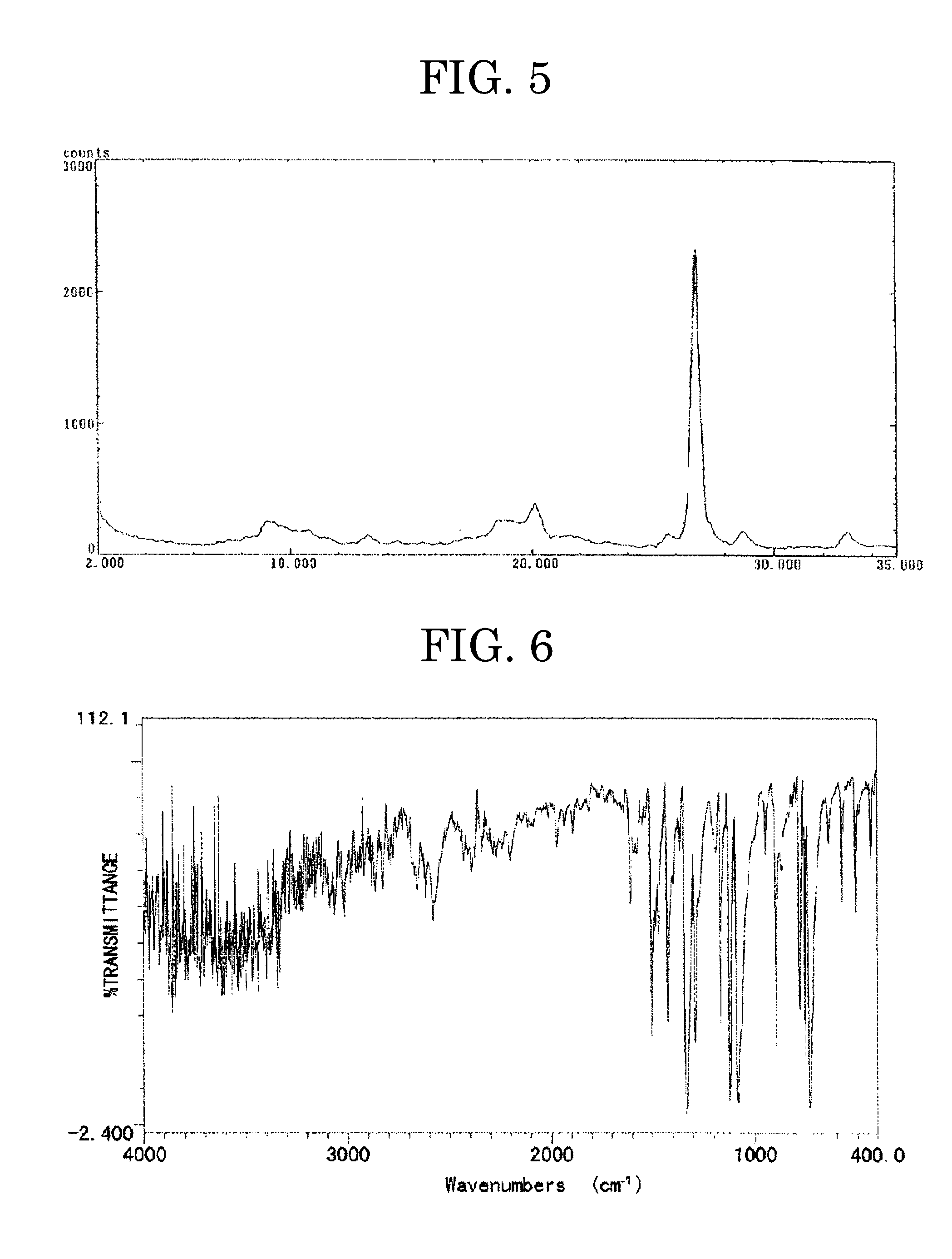Hydroxygallium porphyrazine derivative mixture and electrophotographic photoconductor
a technology of hydroxygallium porphyrazine and derivative mixture, which is applied in the direction of electrographic process apparatus, instruments, corona discharge, etc., can solve the problems of large variation in sensitivity, decrease in chargeability, and electrotrophotographic photoconductors, and achieve excellent sensitivity
- Summary
- Abstract
- Description
- Claims
- Application Information
AI Technical Summary
Benefits of technology
Problems solved by technology
Method used
Image
Examples
production example 1
Production of Chlorogallium Porphyrazine Derivative Mixture (Mixture No. 1)
[0287]Gallium trichloride (5.00 g, 28.4 mmol) was added to phthalonitrile (14.48 g, 0.5679 mmol×199) and 2,3-dicyanopyridine (73.33 mg, 0.5679 mmol) in 1-chloronaphthalene (70 mL), and the mixture was heated and stirred under argon flow at 240° C. to 246° C. for 12 hours. The resultant mixture was left to cool to 130° C., followed by filtration. The obtained crystals were washed with N,N-dimethylformamide and water, and then dried with heating under reduced pressure, to thereby obtain 13.94 g of a chlorogallium porphyrazine derivative mixture (mixture No. 1) as blue powder.
[0288]FIGS. 1 and 2 respectively show a powder X ray spectrum and an infrared absorption spectrum (measured by the KBr tablet method) of the powder of the chlorogallium porphyrazine derivative mixture.
[0289]Here, the X ray spectrum was measured with CuKα rays under the following conditions.
Measurement apparatus: X'Pert Pro (product of Phili...
production example 2
Production of Chlorogallium Porphyrazine Derivative Mixture (Mixture No. 2)
[0292]The procedure of Production Example 1 was repeated, except that the mixing ratio of phthalonitrile and 2,3-dicyanopyridine was changed as described in Table 1, to thereby produce a chlorogallium porphyrazine derivative mixture (mixture No. 2). Table 1 shows the yield and the result of elemental analysis of the mixture. FIGS. 3 and 4 respectively show a powder X ray spectrum and an infrared absorption spectrum (measured by the KBr tablet method) of the mixture.
production example 3
Production of Chlorogallium Porphyrazine Derivative Mixture (Mixture No. 3)
[0293]The procedure of Production Example 1 was repeated, except that the mixing ratio of phthalonitrile and 2,3-dicyanopyridine was changed as described in Table 1, to thereby produce a chlorogallium porphyrazine derivative mixture (mixture No. 3). Table 1 shows the yield and the result of elemental analysis of the mixture. FIGS. 5 and 6 respectively show a powder X ray spectrum and an infrared absorption spectrum (measured by the KBr tablet method) of the mixture.
[0294]
TABLE 1Phthalonitrile:2,Results ofProductionMixture3-DicyanopyridineYieldelemental analysis (%)Ex.No.(ratio by mole)(g)CHN11199:1 13.9462.042.6918.332239:113.3661.822.6618.0033 7:111.0861.772.6819.10
PUM
 Login to View More
Login to View More Abstract
Description
Claims
Application Information
 Login to View More
Login to View More - R&D
- Intellectual Property
- Life Sciences
- Materials
- Tech Scout
- Unparalleled Data Quality
- Higher Quality Content
- 60% Fewer Hallucinations
Browse by: Latest US Patents, China's latest patents, Technical Efficacy Thesaurus, Application Domain, Technology Topic, Popular Technical Reports.
© 2025 PatSnap. All rights reserved.Legal|Privacy policy|Modern Slavery Act Transparency Statement|Sitemap|About US| Contact US: help@patsnap.com



